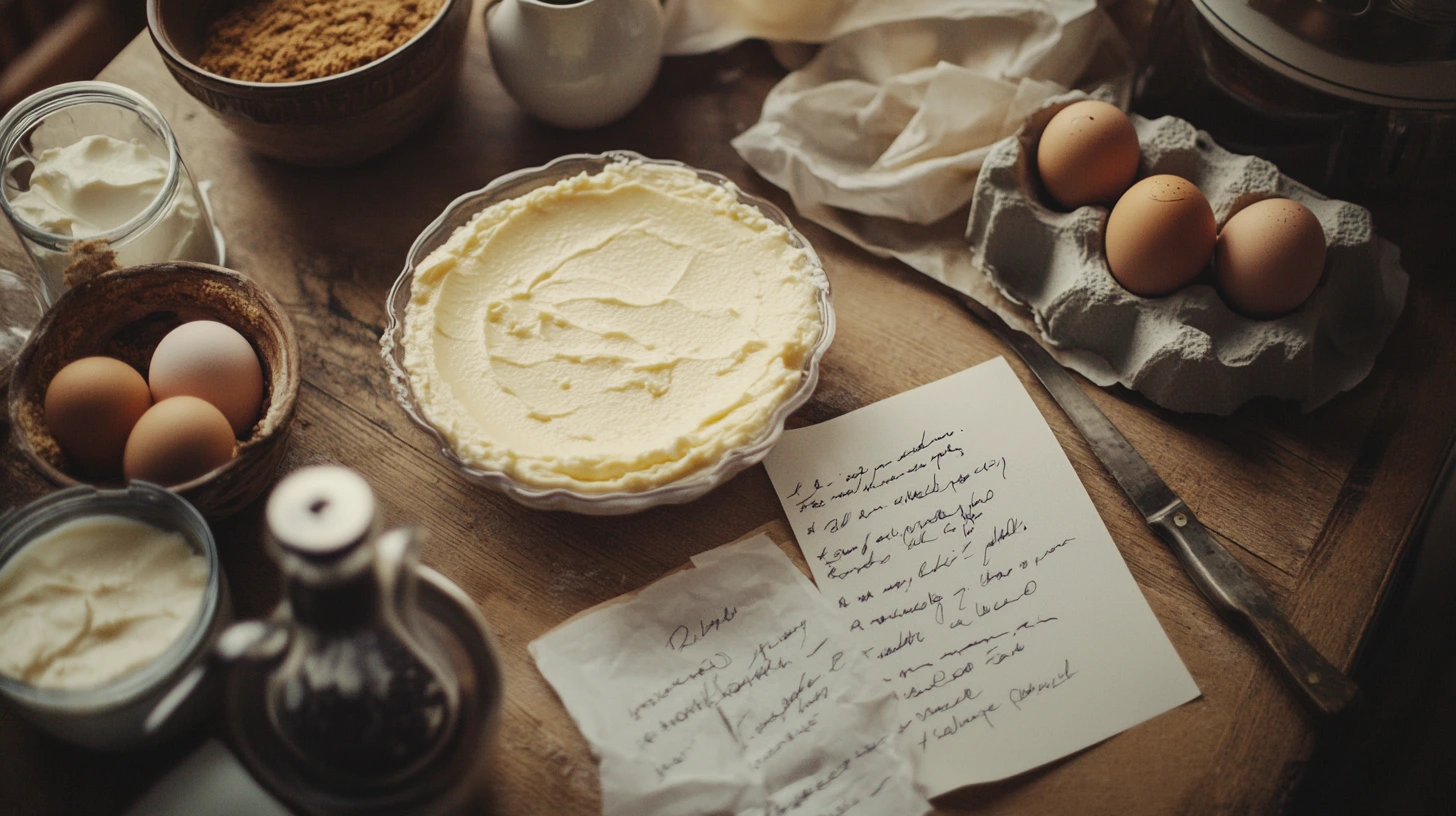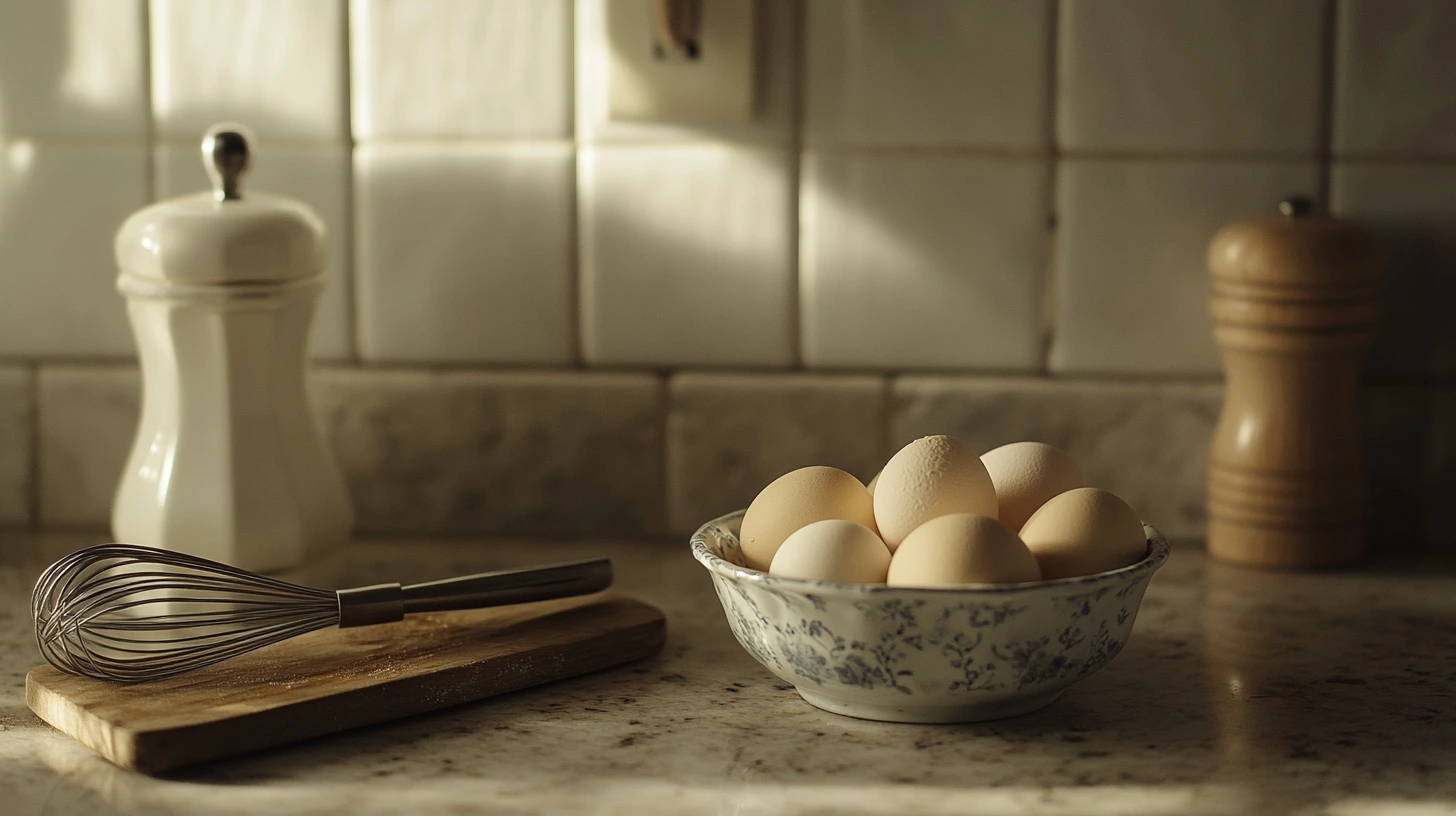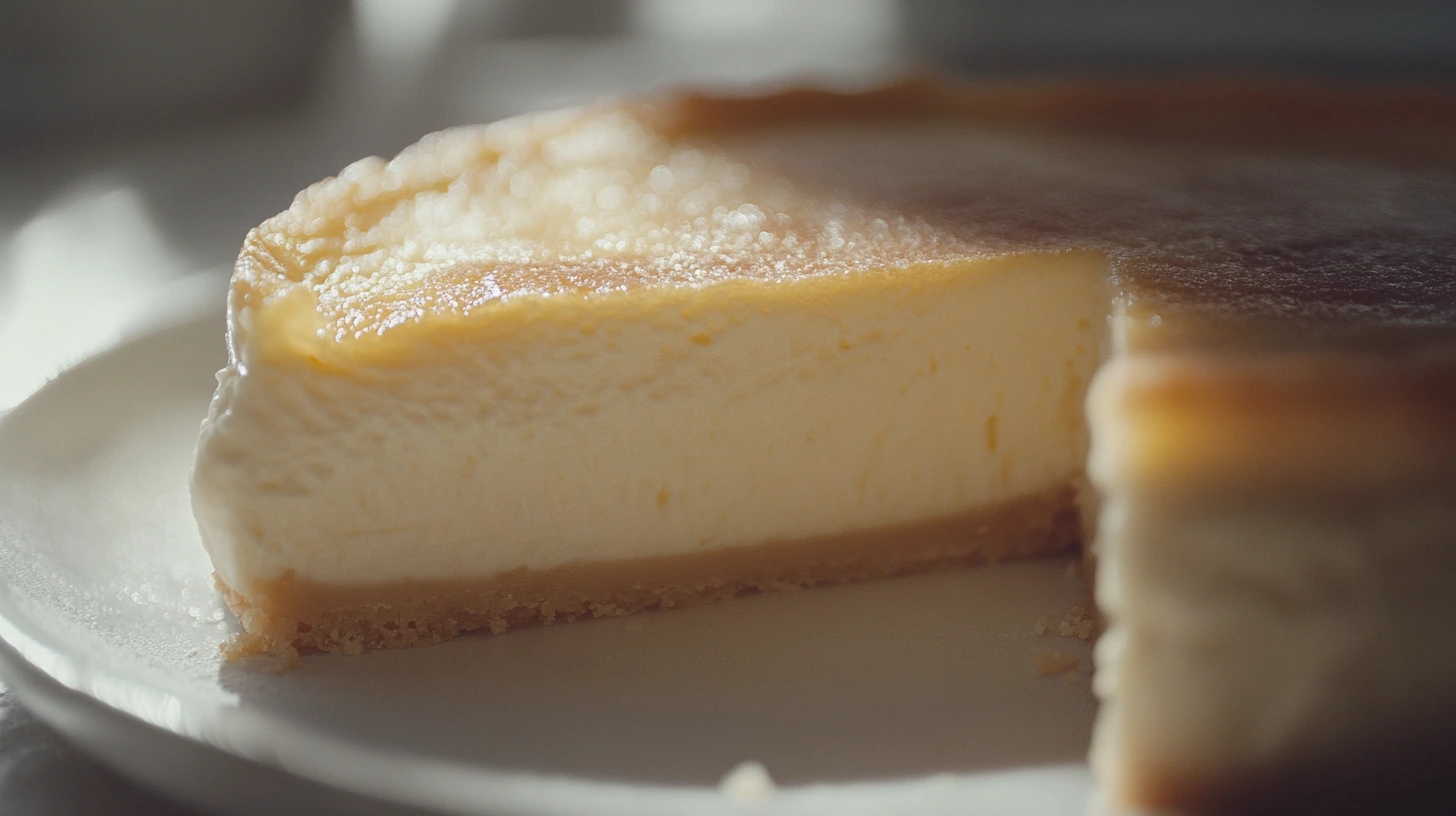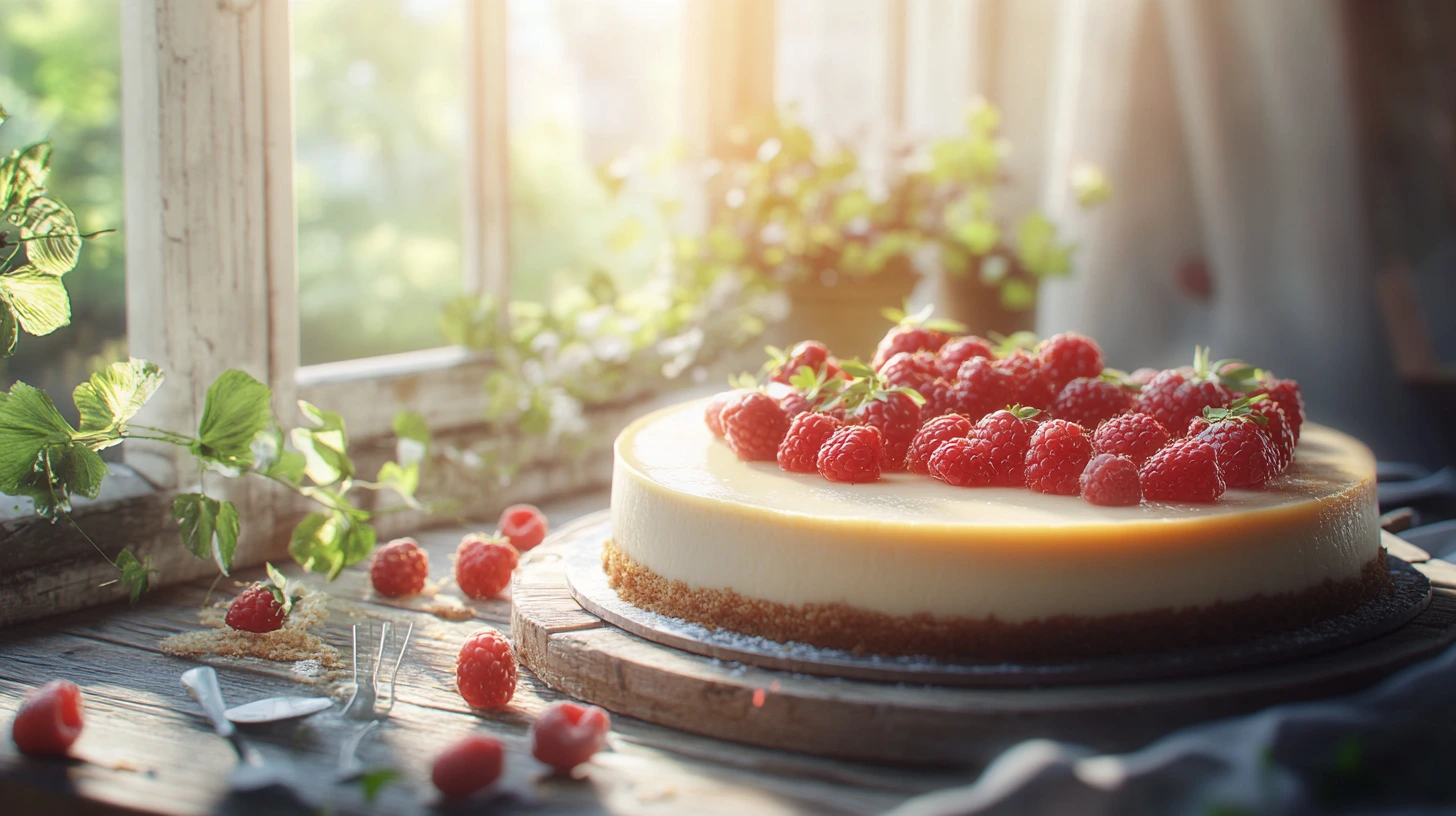Understanding Cheesecake Basics
Adding egg to cheesecake, Cheesecake is a beloved dessert known for its creamy, indulgent texture and rich flavor. Whether baked or no-bake, understanding its core components and techniques is crucial for achieving the perfect cheesecake every time. This guide will break down the essential ingredients, and the role eggs play in shaping cheesecake texture.
The Key Ingredients in a Classic Cheesecake

A classic cheesecake typically contains five fundamental ingredients:
- Cream Cheese: The star of any cheesecake, cream cheese provides a smooth, creamy texture and rich flavor. Always use full-fat cream cheese for the best results.
- Sugar: Granulated sugar sweetens the cheesecake while softening the cream cheese, resulting in a silkier filling.
- Eggs: Eggs act as binders, holding the ingredients together while contributing to the texture (explained below).
- Crust: Often made from crushed graham crackers or biscuits mixed with melted butter, the crust provides a contrasting base to the creamy filling.
- Flavorings: Common flavorings include vanilla extract, lemon zest, or sour cream, which balance the richness and add depth to the cheesecake.
Optional toppings like fruit compotes, chocolate ganache, or whipped cream can further enhance the flavor and presentation.
How Eggs Influence Cheesecake Texture
Eggs play a significant role in determining the texture of baked cheesecake. Here’s how:
- Binding: Eggs provide structure by binding the ingredients together when baked. Withecake would be loose and unable to holdablehape without eggs.
- Creaminess vs. Density: The number of eggs and how they’re mixed into the batter can influence the texture. Overheating the eggs incorporates air, leading to a lighter and fluffier cheesecake. Conversely, a gentle mix keeps the texture dense and creamy.
- Custard-Like Effect: Eggs, due to their protein content, help create a custard-like consistency. During baking, the proteins coagulate, forming the cheesecake while retaining a velvety texture.
- Avoiding Cracks: Baking the cheesecake with proper temperature control prevents the eggs from overcooking, which could cause cracks on the surface. Even when cooking, a water bath (bain-marie) is often used to achieve gentleness.
The Role of Eggs in Cheesecake

Eggs are a key component of most cheesecakes. They contribute to:
- Structure: Eggs help bind the ingredients, creating a firm yet creamy texture.
- Moisture: The yolks add fat, making the cheesecake rich and smooth.
- Emulsification: Eggs stabilize the mixture, ensuring even baking.
Adding an extra egg enhances the cheesecake’s creaminess and provides a smoother, custard-like consistency.
How to Add an Extra Egg
If your recipe calls for 2 or 3 eggs, add just one more:
- Balance the proportions: Slightly increase your cream cheese or other moist ingredients to avoid a rubbery texture.
- Beat gently: Overmixing eggs can introduce too much air, leading to cracks during baking.
For tips on ensuring your cheesecake sets properly, consider checking out Should All Cheesecakes Be Baked in a Water Bath? a helpful guide to avoid common baking pitfalls.
Complementing the Extra Egg
Pair the additional egg with these techniques:
- Use a water bath: This prevents sudden temperature changes, reducing cracks.
- Add flavor variations: Enhance your base recipe with ideas like this Strawberry Cheesecake Recipe.
- Check doneness properly: Cheesecakes should jiggle slightly at the center. Unsure when it’s done? Read How Do I Know When Mini Cheesecakes Are Done?
Texture: New York vs. Classic
The extra egg also brings the cheesecake closer to a New York-style texture—dense yet creamy. Learn more about the differences between cheesecake types in What Is the Difference Between New York Cheesecake and Classic Cheesecake?
Flavor Enhancements with Extra Eggs
Eggs subtly influence the flavor profile of cheesecake. With an extra egg:
- The richness of the cheesecake increases due to the natural fat content of the yolk.
- A slightly eggier taste may emerge, enhancing custard-like notes but overpowering the classic cream cheese flavor if overdone.
For those who enjoy a more decadent, more custardy cheesecake, adding an extra egg can enhance its flavor balance.
Visual Impact of an Extra Egg
An extra egg affects not only the interior but also the visual appeal of your cheesecake:
- Smooth Surface: Properly baked cheesecakes with additional eggs often have a smooth, firm top.
- Heightened Structure: The batter holds its shape more effectively, giving the cheesecake a taller and more defined look.
However, improper handling, such as overmixing, could cause cracks or air pockets to form.
The Golden Brown Top: Does an Extra Egg Help?
Adding an extra egg can encourage a golden brown top on your cheesecake. The proteins and natural sugars in the egg yolk promote browning through the Maillard reaction during baking.
For a deeper golden hue:
- Bake at a slightly higher temperature for the last few minutes.
- Avoid covering the cheesecake during baking to allow the top to color evenly.
When is it Beneficial to Add an Extra Egg?
Adding an extra egg can be helpful when:
- You Want a Firmer Cheesecake: Ideal for baked cheesecakes where more structure is needed.
- Adapting for a Deep-Dish Cheesecake: A taller cheesecake requires additional binding to support its height.
- Customizing Texture: An extra egg can enhance consistency for a custardy, denser result.
Adjusting for Different Cheesecake Styles

- New York-Style Cheesecake: A denser, creamier texture benefits from an extra egg, enhancing structure and richness.
- Light and Airy Cheesecakes: Avoid extra eggs here, as they can weigh down the batter and reduce airiness.
- Flavored Cheesecakes: For cheesecakes with fruit purée or liquid flavorings, an extra egg helps balance moisture and maintain structure.
Factors to Consider: Oven Temperature and Cooking Time
When adding an extra egg:
- Reduce the Oven Temperature slightly to prevent overcooking and browning too quickly.
- Increase Baking Time by a few minutes to ensure the batter fully sets without curdling.
Properly adjusting these factors ensures the cheesecake bakes evenly and achieves the desired texture.
The Risks of Overdoing It: What Happens if Too Many Eggs Are Added?
While an extra egg can improve structure and richness, adding too many eggs can lead to undesirable results:
- Rubbery Texture: Too much protein causes the cheesecake to lose its creamy consistency, becoming rigid and rubbery.
- Cracks: Excess eggs can cause the cheesecake to puff up during baking and collapse as it cools, resulting in cracks on the surface.
- Eggy Flavor: An overly eggy taste can overpower the delicate balance of flavors in a classic cheesecake.
Tips for Perfecting Cheesecake Texture with Eggs
Mastering the role of eggs in cheesecake is key to achieving the perfect texture—whether creamy, light, or dense. By balancing ingredients, exploring alternatives, and refining your method through trial and error, you can consistently create a cheesecake that meets your texture preferences.
Balancing Eggs with Other Ingredients
Eggs provide structure, but their interaction with other ingredients determines the final texture. Here’s how to achieve balance:
- Adjust the Fat Content:
- Increase cream cheese, sour cream, or heavy cream to soften the cheesecake and offset the firmness caused by extra eggs.
- Use full-fat dairy for the richest, creamiest results.
- Control the Liquid:
- Adding too much liquid (e.g., lemon juice, fruit purée) can make the batter overly soft. Balance it with additional egg whites or a slight increase in eggs to maintain structure.
- Incorporate Sugar Carefully:
- Sugar softens the filling by interfering with egg protein coagulation. Adjust sugar amounts based on the number of eggs to ensure balance.
- Gentle Mixing:
- Overmixing eggs incorporates too much air, creating a light, airy texture instead of the creamy, dense consistency desired in many cheesecakes. Mix eggs gently until just combined.
You can strike the ideal balance for your preferred cheesecake texture by fine-tuning these components.
Experimenting with Egg Substitutes
If you’re looking to modify your cheesecake recipe for dietary preferences or a different texture, consider these egg substitutes:
- Sour Cream or Yogurt:
- Adds creaminess while maintaining structure. Replace one egg with ¼ cup of sour cream or plain yogurt.
- Cornstarch or Arrowroot Powder:
- Cornstarch acts as a binding agent. To replace one egg, mix one tablespoon of cornstarch with two tablespoons of water.
- Silken Tofu:
- Creates a smooth, dense texture. Blend ¼ cup of silken tofu to replace each egg.
- Mashed Banana or Applesauce:
- Ideal for no-bake cheesecakes, these substitutes add moisture and slight sweetness. Use ¼ cup per egg replacement.
- Flaxseed or Chia Seed Gel:
- To replace one egg, combine one tablespoon of ground flaxseed or chia seeds with three tablespoons of water. This works well in vegan versions.
Experimenting with substitutes may slightly alter the flavor and texture, so adjust other ingredients as needed to maintain balance.
Achieving the Desired Texture: Trial and Error
Perfecting cheesecake texture requires practice and careful observation. Use these tips to refine your process:
- Start Small:
- Modify the number of eggs gradually. Adding or reducing even one egg can significantly affect texture.
- Test Baking Temperatures:
- Lower oven temperatures (around 300°F/150°C) and slow baking encourage a creamier texture, while slightly higher temperatures firm up the cheesecake faster.
- Observe Cooling Techniques:
- Allow the cheesecake to cool slowly in the oven (with the door ajar) to prevent cracking and ensure a smooth texture.
- Keep Notes:
- Document changes to egg quantities, baking times, and ingredient ratios to determine what best achieves your ideal texture.
- Taste and Adjust:
- Experiment with minor creaminess, firmness, and flavor tweaks until you achieve the perfect cheesecake for your preferences.
FAQs About Adding Extra Eggs to Cheesecake
Adding extra eggs to cheesecake can raise questions about texture, baking times, and recipe adjustments. Here are answers to common queries to help you navigate the process.
Can Adding Extra Eggs Make a Cheesecake Too Dense?
Adding too many eggs can result in a dense and rubbery texture. Eggs provide structure through protein coagulation during baking, but excess protein causes the cheesecake to become overly firm.
- To maintain creaminess, balance extra eggs with additional fat (like cream cheese, sour cream, or heavy cream) to soften the texture.
- Avoid overmixing the batter, as this can also create a dense outcome.
How Do Extra Eggs Affect the Baking Time?
Adding extra eggs generally increases the baking time because the additional protein and liquid require more heat to set.
- Adjust the baking time: When adding an extra egg, your cheesecake will need to be baked for 5–10 minutes longer.
- Check for doneness: The cheesecake should jiggle slightly in the center but set around the edges. Overbaking can lead to cracks or a dry texture.
- Use a water bath (bain-marie) to ensure gentle and even baking.
Is It Necessary to Add Extra Eggs for a Creamier Cheesecake?
No, extra eggs are not necessary to achieve a creamier cheesecake. Creaminess primarily comes from:
- Fat Content: Use full-fat cream cheese, heavy or sour cream to enhance richness.
- Baking Technique: Bake at a low temperature and cool gradually to retain a smooth, creamy texture.
- Proper Mixing: Avoid overmixing, as too much air can produce a grainy or less creamy filling.
Extra eggs contribute to structure rather than creaminess. For a velvety cheesecake, focus on high-fat ingredients and gentle baking.
Can I Add an Extra Egg if I’m Making a No-Bake Cheesecake?
No, extra eggs are not needed in a no-bake cheesecake. To set the filling, no-bake versions rely on refrigeration and stabilizers, like gelatin, whipped cream, or cream cheese. Eggs, which require heat to bind and set, are unnecessary for this cheesecake style.
If you want to add structure to a no-bake cheesecake, consider:
- Gelatin for firmness.
- Chilling Time: Allow at least 4–6 hours for proper setting.
Can I Use Egg Substitutes for a Lighter Cheesecake?
Yes, egg substitutes can create a lighter texture while maintaining structure in cheesecakes. Popular substitutes include:
- Silken Tofu: Blended tofu adds a creamy, light consistency. Use ¼ cup per egg.
- Cornstarch: Mix one tablespoon with two tablespoons of water to mimic egg binding.
- Flaxseed or Chia Gel: Combine one tablespoon of ground flaxseed/chia seeds with three tablespoons of water per egg.
- Sour Cream or Yogurt: Adds creaminess while reducing density. Use ¼ cup to replace one egg.
These substitutes are ideal for avoiding eggs or seeking a softer, airier cheesecake.
What Other Adjustments Should I Make When Adding an Extra Egg?
When adding an extra egg, adjust the following elements to maintain balance:
- Reduce Baking Temperature: Bake at a slightly lower temperature (around 300°F/150°C) to prevent overcooking.
- Increase Baking Time: Allow a few extra minutes for the batter to set.
- Adjust Fat Content: Add more sour cream or heavy cream to counterbalance firmness and preserve creaminess.
- Mix Gently: Avoid overmixing the batter after adding the extra egg to prevent air bubbles or a dense texture.
Conclusion: Perfecting Your Cheesecake with the Right Amount of Eggs
Eggs play a pivotal role in determining a cheesecake’s texture, structure, and overall success. Understanding how they interact with other ingredients allows you to fine-tune your recipe for the perfect balance of creaminess and firmness. Whether you prefer a soft, velvety cheesecake or a denser, more custard-like result, the number of eggs—and how they are handled—makes all the difference.
By carefully balancing eggs with fats, liquids, and sugar and adjusting baking techniques as needed, you can avoid common pitfalls like an overly dense or cracked cheesecake. Remember that experimentation is key—start small, observe the results, and make gradual changes to refine your method.
Experiment and Enjoy!
Adding an extra egg is a small change that can elevate your cheesecake to new heights. Whether following a traditional recipe or experimenting with flavors, don’t hesitate to explore variations like Chocolate Cheesecake Recipe or a Healthy Cheesecake Recipe.
With these tips, your cheesecake will impress and become the highlight of any occasion.

